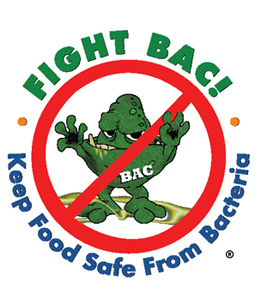December 3, 2007
Food Safety For The Holiday Season

By Michael D. Shaw
In December, it is customary for us to take stock of what has happened during the past year as well as peer into the future. Way back in December of 1900, the The Ladies’ Home Journal ran a piece by John Elfreth Watkins, Jr. entitled “What May Happen in the Next Hundred Years.”
Many of Watkins’ predictions were spot on, such as Telephones Around the World; Man will See Around the World; There will be air-ships; and Hot and Cold Air from Spigots. A few others were a bit utopian—No Mosquitoes nor Flies; A university education will be free to every man and woman; and this one:
No Foods will be Exposed. Storekeepers who expose food to air breathed out by patrons or to the atmosphere of the busy streets will be arrested with those who sell stale or adulterated produce.
Which brings us to the topic—always current, but especially so during the holidays—of food safety.
Since Watkins’ best predictions relied on the can’t miss notion of ever-improving technology, he would have been mortified to hear that in 2001, according to the Centers for Disease Control and Prevention, the frequency of serious gastrointestinal illness—a common gauge of food poisoning—was 34 percent above what it was in 1948. Smug as we are in our chronological superiority, we ask how can this be?
Some of it, ironically enough, is because we are eating healthier. People are consuming far more raw fruits and vegetables. Another aspect is the proliferation of convenience foods. Precooked food such as seafood salads and deli meats can be more dangerous than that old-fashioned fully home-cooked meal.
A further point is that the sheer variety of foods now being consumed—compared to what was common in 1948—has simply overwhelmed the regulators. Sad to say, the amount of contaminated foods that is reaching supermarket shelves to be recalled later is increasing. As former Director of FDA’s Center for Food Safety and Applied Nutrition Joseph A. Levitt noted at the time, “We do have a real problem.”
Complicating the situation is the chronic issue in our fast-changing world of pursuing an outdated model, or—to put in more eloquently—operating within the wrong paradigm.
Traditionally, food safety has focused on meat and poultry (regulated by the Department of Agriculture), even though the Government Accountability Office estimates that 85 percent of food poisoning now comes from the fruits, vegetables, seafood, and cheeses that are regulated by the FDA. The trouble is that Agriculture has perhaps ten times more inspectors than does the FDA.
Comments from the field are not exactly encouraging:
“The FDA is simply going from crisis to crisis and attempting to put out the fires,” said Caroline Smith DeWaal, food safety director for the Center for Science in the Public Interest.
“Any reasonable person would worry about it,” said George Grob, deputy inspector general for the Department of Health and Human Services, which oversees the FDA “If the inspection process worked really well, there would be fewer recalls. That’s why you do inspections: to prevent any contamination from occurring in the first place.”
The CDC now says that food is responsible for twice the number of illnesses in the United States as scientists thought just seven years ago, and at least 80 percent of food-related illnesses are caused by viruses or other pathogens that scientists cannot even identify. Scary enough for you?
The best thing you can do is to be prudent and well-informed. Check out the FDA’s Tips to Prevent Foodborne Illness This Holiday Season.
Here are some of the basics…
CLEAN Wash hands and food-contact surfaces often. Bacteria can spread throughout the kitchen and get onto cutting boards, knives, sponges, and counter tops.
SEPARATE Don’t cross-contaminate. Don’t let bacteria spread from one food product to another. This is especially true for raw meat, poultry and seafood. Experts caution to keep these foods and their juices away from ready-to-eat foods.
COOK Cook to a safe internal temperature. Foods are properly cooked when they are heated for a long enough time and at a high enough temperature to kill the harmful bacteria that cause foodborne illness. Use a food thermometer to measure the internal temperature of foods.
CHILL Refrigerate promptly to keep most harmful bacteria from growing and multiplying. Refrigerators should be set at 40° F (4° C) and the freezer at 0° F (-18° C). The accuracy of the settings should be checked occasionally with a thermometer.
Keep your holidays happy. Practice food safety!

